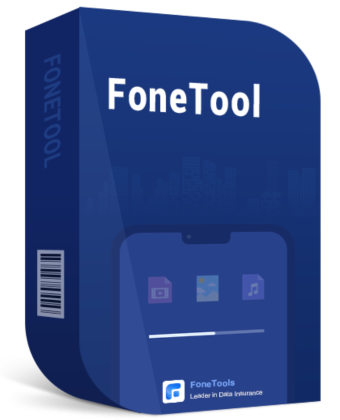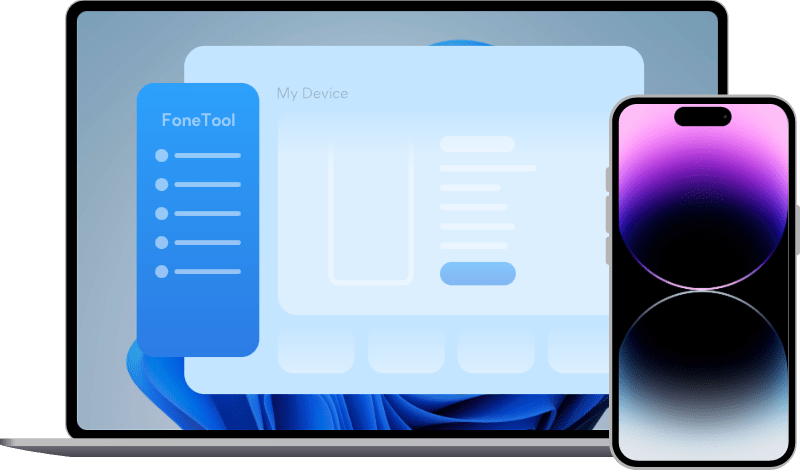Easily Backup iPhone to External Hard Drive on Windows 11/10
When you need to backup iPhone to external hard drive on Windows 11/10, find ways in this article! You can easily copy iPhone backup with or without iTunes to make it.
How to backup iPhone to external hard drive on Windows 11
My iPhone needs to be backed up now, and I would like to save the backup files to my Seagate external hard drive. I have an iPhone 14 and a Dell PC running Windows 11. Thanks for any help.
- Question from iPhone user
The security of iPhone data is still a concern because of the possibility of data loss involving important content such as photos, videos, contacts, and messages. Protecting against these potential hazards requires proactively creating iPhone backups. Probably to save PC storage, you will want to backup iPhone to external hard drive.
In addition, having an iPhone backup can also help when you get a new iPhone. You can easily restore iPhone Backup to your iPhone to perform iPhone data migration.
Next, you can refer to the following part, we will walk you through how to create an iPhone backup on your external hard drive.
Here we provide 2 tools to move iPhone data to an external hard drive on Windows 11/10 computer or laptop. You can either iTunes or powerful backup software- FoneTool.
► Method 1 - FoneTool can be the best choice for most users. It comes with an intuitive (GUI) interface, so everyone can easily complete the backup operation.
► Method 2 -iTunes is suitable for those who know how to use command lines. Because iTunes saves a backup on the C drive of a PC by default, you need to change the path using Command Prompts.
Method 1. Easily backup iPhone to external drive on Windows PC
To most users, a professional backup software named FoneTool can help. It can be the best way to backup an iPhone directly to an external hard drive on Windows 11/10 PC. With its intuitive interface, you can move your iPhone to an HDD, SSD, USB drive without command prompts. With just a few clicks, anyone can easily complete an iPhone backup.

- Fully/selectively backup iPhone data as you like.
- Transfer and backup unlimited files between iPhone and PC.
- Safely restore iPhone from backup without deleting files.
- Transferring 500 photos to an external drive only takes 10 seconds.
- Specify a backup location: NAS, USB drive and other external drives.
Download FoneTool on computer, plug your external hard drive into computer, and connect iPhone to computer with a USB cable. We will guide you on how to copy iPhone backup to external drive on Windows 10/11 including photos, videos, contacts, music, and other data with FoneTool.
Here we separately introduce the Full Backup and Selective Backup features of FoneTool to help you backup iPhone to external hard drive on Windows 11/10.
1. Fully backup iPhone to an external drive
Step 1. Run FoneTool on your computer, and click Phone Backup on the left interface. Go to Full Backup > Click Get Started to continue.
Step 2. Click Backup Storage Path to choose your external hard drive as the backup location. If you need, you can enable the backup encryption. Then click Start Backup.
2. Selectively backup iPhone to external hard drive
Step 1. Select Phone Backup on the FoneTool interface, and choose Selective Backup. Click "Get Started".
-
You can also go to Phone Transfer > Choose iPhone to PC to transfer photos, videos, contacts and music from iPhone to computer/external hard drive.
Step 2. Click each icon to preview iPhone data. Select what you need and click OK.
Step 3. Click the Backup Storage Path to change iPhone backup location to external hard drive on Windows 10/11 and then click Start Backup to copy everything you have selected to external drive. In this step, you could backup iPhone to NAS or network drive if you have mapped it into a local drive.
To restore the backup, you can enter MyBackups and click the Restoredot to finish the process. With restoring full backup, you can transfer everything from your iPhone to an external hard drive.
Method 2. Backup iPhone to external hard drive without iTunes for free (GUI interface)
iTunes is a strict software. You can just make a full backup of iPhone (some local data in apps and all the settings) and you can’t view what’s inside of it, but you can have an overview of what iTunes backup includes.
Changing iTunes backup location is a little complicated. There are no options in iTunes to do that, so you can only use Windows CMD to force iTunes to save iPhone backup to another partition. If you just need the pictures, it will be very easy to backup iPhone photos to external hard drive in Windows 10/11.
Step 1. Download iTunes to your Windows PC.
Step 2. Connect iPhone to the computer with a USB cable and plug the external hard drive into the computer. Now you can change iTunes backup location to external hard drive.
Step 3. Open Windows File Explorer and then go to C:\Users\[PC name]\AppData\Roaming\Apple Computer\ MobileSync. That's the default location where iTunes saves your iPhone backup on computer.
Step 4. Delete the content in the folder Backup and then create an empty folder called MobileSync in your external drive.
Step 5. Press Win + R and input “cmd” in the box. Press enter to open Windows Command Processor.
Step 6. In the window, enter mklink /J “C:\Users\[PC name]\AppData\Roaming\Apple Computer\MobileSync\Backup” “E:\MobileSync” and press Enter. You should be aware whether E is the drive letter of your external drive, or you need to modify the command. If it runs successfully, go to the next step.
If you don’t see AppData, it is hidden. You should navigate to View at the top of the toolbar in Windows Explorer and check Hidden items.
Step 7. Launch iTunes and connect your iPhone to computer. Remember to tap Trust This iPhone to allow this computer to scan it.
Step 8. Click the phone-shape icon in the upper left corner > Summary > Back Up Now. It could take several minutes to complete the task.
After the task is finished, you need to check whether you have moved iTunes backup to external hard drive. In fact, you could find the iPhone backup both in C:\Users\[PC name]\AppData\Roaming\Apple Computer\ MobileSync and your external destination, but then it is actually stored in your external hard drive and doesn’t use the space of C Drive.
-
iTunes is working, but if you are not familiar with Command Prompt, it may be not suitable for you. Besides, iTunes can't selectively backup iPhone data.
Further reading: How to backup iPhone to external hard drive using Mac
If you are using a Macbook, you can refer to this part to backup iPhone to USB drive / external storage device on macOS.
Mac Finder can help you create an iPhone backup on Macbook. If you want to backup to external drive, you need to change iPhone backup location. Here are the steps.
Backup iPhone to external hard drive using Macbook
1. First, add terminal utility to your Mac: Click Apple icon on your Mac > Choose System Preferences. >Security & Privacy > Choose Privacy tab > Click the lock icon to make the change > Choose Full Disk Access and click Plus > Find the Terminal and choose it.
2. Connect your external disk to Mac. Run Terminal, and type this code:
ln -s /Volumes/**your external hard drive name**/ios_backup ~/Library/Application\ Support/MobileSync/Backup/
3. Exit Terminal.
4. Now connect your iPhone to the Mac. Run Finder. Choose your iPhone on the left side. Tick "Back up all the data on your iPhone to this Mac", and click "Back Up Now".
Move iPhone backup to external hard drive
If you have backed up your iPhone to Mac, you can move the backup to external drive by following the steps below.
1. Open Finder on your Macbook, and open Backup folder.
2. Drag the iPhone backup you need to the external hard drive. Click OK to confirm. You can find the external hard drive under Locations in the Finder sidebar.
3. Enter the admin password if it asks. And wait for the transfer process completed.
Conclusion
Storage shortage on computer might drive you to backup iPhone to external hard drive on Windows 11/10, and saving the backup files to external drive makes them safer and easier to use. These 2 methods can be also applied for backing up files from iPad to external drive.
FoneTool is the most convenient iPhone backup software to backup or move iOS/iPhone files to an external hard drive on Windows 10 computer. It supports all the popular external hard drives and exports what you want with one click. You can also change iTunes backup location but it is a little complicated.
FAQs about backup iPhone to external hard drive
Can I directly move iPhone backup to external hard drive without computer?
Step 2. Go to your photos, videos, messages, files, etc. you want to backup and select.
Step 3. Choose share.
Step 4. Select the external hard drive and tap save.
How can I move iPhone backup to external hard drive?
Step 2. Find the iTunes backup on File Explorer. The iTunes backup will be located at "C:\Users\user\AppData\Roaming\Apple Computer\MobileSync\Backup" by default.
Step 3. Copy the backup and paste it to your external hard dive.
Step 2. Click "Manage Backups..." and right-click on the backup you want to move.
Step 3. Click "Show in Finder". Then copy the backup to the external hard drive.
Can I only backup photos library to external hard drive?
Can you backup iPhone to external hard drive without computer?
Step 2. Navigate to your iPhone and select the photos, videos, or other documents you wish to move to your external hard drive. Next, tap the Share icon located in the lower-left corner.
Step 3. Opt for your external hard drive as the destination and tap Save. Your files will then be copied to the external hard drive.

